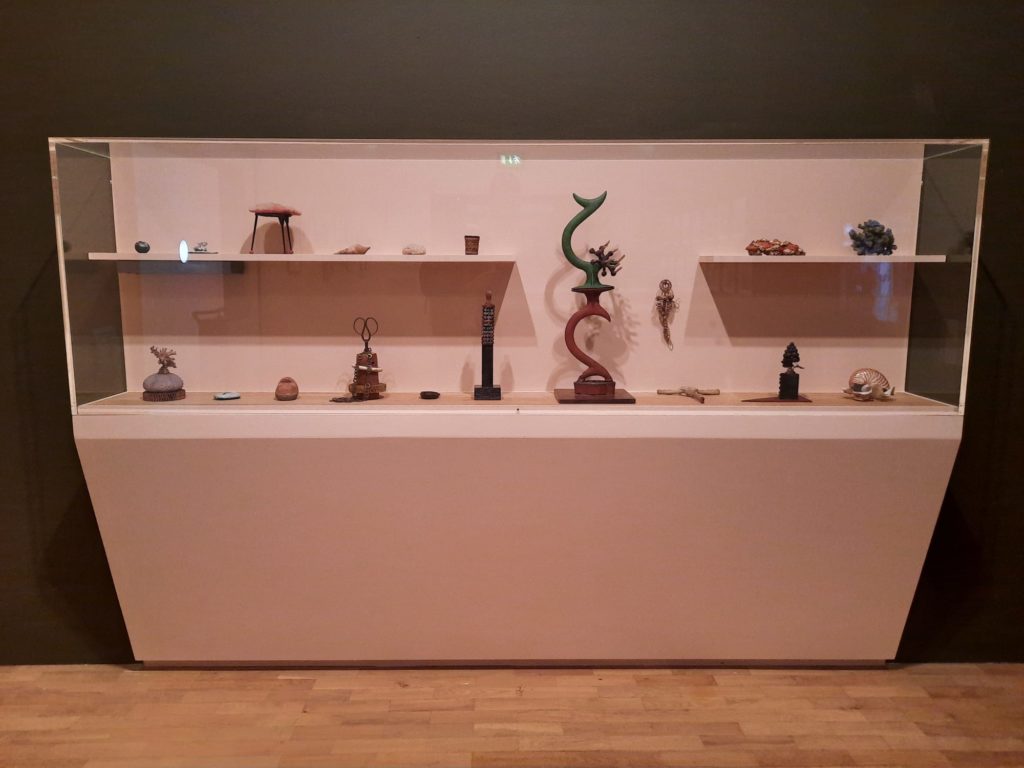The Covid Diaries 90 – The Whitechapel Gallery, Eileen Agar: Angel Of Anarchy (LAST CHANCE TO SEE)
A review of Eileen Agar: Angel of Anarchy at the Whitechapel Gallery. In which a long career provides a great depth of works to choose from.

Eileen Agar
It is such a luxury to once again have so many cultural offerings available that I can’t squeeze them all in. I only just made it to Eileen Agar: Angel of Anarchy a short time before the exhibition closed, and so would urge you to be quick if you also want to see it! This retrospective spans the length of Agar’s career, from the 1920s to 1980s. In that time she followed her own artistic path; her work is at an intersection between cubism, surrealism, and abstraction.
Agar was born in 1899 in Argentina, to a Scottish father and American mother. It was at a private school back in England that a teacher encouraged her interest in art. Agar was on track for the life of a debutante and society wife and mother, but rebelled against those confines, much to the chagrin of her mother. Instead, she studied under artist Leon Greenwood from 1920-21; and went to the Slade School of Fine Art from 1921-24. It was here she met her first husband, Robin Bartlett, although it would be Hungarian Joseph Bard with whom she would spend more than 50 years.
Throughout her life, Agar rejected classifications and expectations. She was seen as a surrealist, but disagreed with their treatment of women. She went off to Cornwall at one point and shaved her head; and in 1925 destroyed the majority of her early work. Despite her long-standing relationship with Bard, she embarked on a number of affairs with fellow artists. Her relationship with her mother remained strained as she did not conform to her mother’s vision of womanhood. A quote on the Whitechapel Gallery website summarises her attitude nicely:
‘I have spent my whole life in revolt against convention, trying to bring colour and light and a sense of the mysterious to daily existence. One must have a hunger for new colour, new shapes, and new possibilities of discovery.’
Eileen Agar






A Definitive Retrospective
The Whitechapel Gallery has set out to create a definitive exhibition of Agar’s work. To achieve this, they have drawn from public and private collections, and spanned seven decades of work. I found the number of works from private collections to be a defining feature of the exhibition. It reminded me of the Léon Spilliaert exhibition last year at the Royal Academy, and suggests that this is another artist who is somewhat underappreciated. The Tate seems to have a good selection of Agar’s work, but otherwise the jumble of framing styles and qualities underscores how much of Agar’s output remains in private hands.
The exhibition follows a chronological order, which allows us to see developments in Agar’s work. It is certainly interesting to see her fusion of cubism and surrealism, which is not common among artists of her generation. We also see her delve into collage as a medium, and create three-dimensional works. Upstairs, I loved the Pathé reel of Agar modelling a Ceremonial Hat for Eating Bouillabaisse, much to the bemusement of passers-by. You can watch it here. She did, then, adopt the Surrealist love for provocation.
Throughout, archival materials reinforce the themes of the exhibition. These show the reception of her work, and also some of her sources. It is an interesting way to dive deeper into the mind and practices of Eileen Agar.






Angel of Anarchy
Why is it, then, that Agar is not more famous? Because she is a woman? Or something else? Something that struck me as I walked through the exhibition is that there is not quite a definitive style that marks out ‘Ah yes, that’s an Eileen Agar.’ Perhaps her willingness to experiment and adopt new techniques has made it more difficult for her work to form a cohesive whole; there are different media, different styles, different palates. A bit like Picasso, only without a recognisable thread to bring the works together.
Other than that, perhaps it is a bit of good old-fashioned sexism which has prevented further public recognition for Agar’s work. Her gender certainly made it harder for her to establish an artistic career. She broke new ground in doing so, however, and moved in artistic circles which are very familiar to us.
So this exhibition is a good opportunity to get to know Eileen Agar and her work better. I enjoyed my visit to the Whitechapel Gallery, and am pleased that I managed to get to the exhibition in time. You have about a week left if you would like to do the same!
On its own merits: 3.5/5
Implementing Covid measures: 4.5/5
Eileen Agar: Angel of Anarchy on until 29 August 2021
Keep up with London exhibition news – sign up below:
If you see this after your page is loaded completely, leafletJS files are missing.


One thought on “The Covid Diaries 90 – The Whitechapel Gallery, Eileen Agar: Angel Of Anarchy (LAST CHANCE TO SEE)”